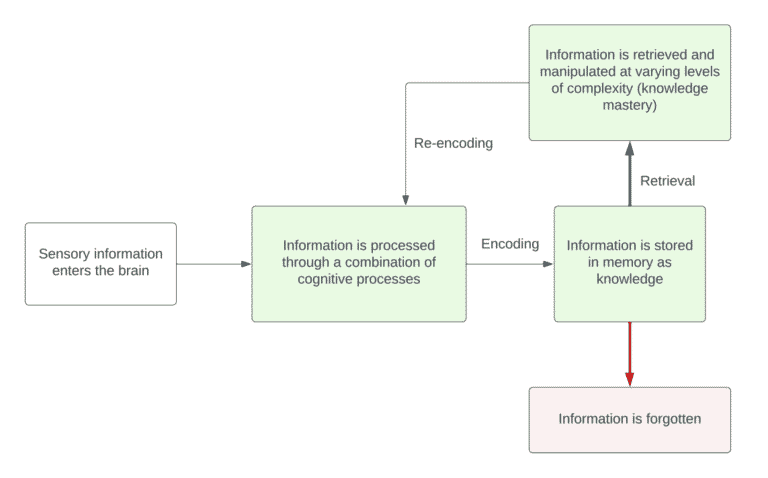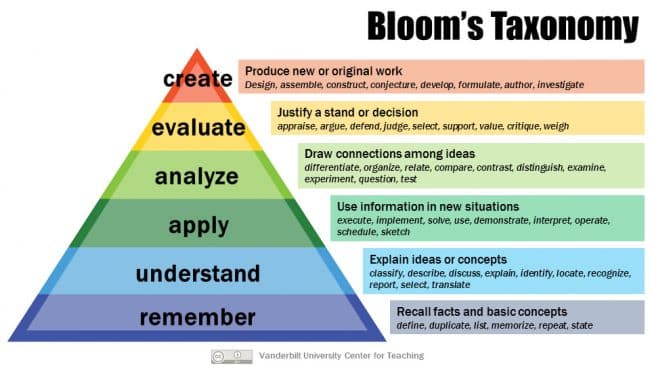Personal Development
Chronic Diseases Cause Bad Memory
The disease is called “inefficient learning”.
It is common for learners of all ages to ask me how they can improve their memory. But this is the wrong question to ask.
In this article, I will briefly outline the main processes research has identified so far and how they impact our memory. How well we retain information is the result of the processes we use to learn it.
Overview in a nutshell
Here is a very, very short summary for those who are impatient:
When information is encoded into our long-term memory through the use of self-regulated higher-order learning, good memory is achieved. This leads to knowledge being retained more effectively as the connected cognitive architectures are consolidated over time, resulting in a reduction of decay. Furthermore, when self-regulated higher-order strategies are employed for learning, individuals benefit from increased motivation and engagement, leading to better assessments outcomes and enhanced ability to remember complex material quickly.
Thank you for reading, and I’ll see you in my other articles.
Let’s explore this further if you’d like…
Long-term memory storage
In structural models of memory, information is encoded and stored in long-term memory through encoding and retrieval. Sensory memory, short-term memory, and long-term memory are the three main components.
It stores short-term sensory information from the environment for a very short period of time, typically less than a second, before it is either discarded or transferred to the short-term memory.
Working memory, or short-term memory, stores information that is currently being used or actively processed. Its capacity is limited, and information not actively processed rapidly disappears.
Additionally, long-term memory is capable of storing information for a long period of time, often for a lifetime. As information is transferred to the long-term memory, it undergoes a process of encoding, which transforms it into a format that can be stored. Through a retrieval process, this information can be retrieved at a later date.
A simplified version of this is provided in the diagram below. In this version, we have removed some of the terminologies that we do not consider to be necessary for a practical understanding of memory and learning. Additionally, this modification addresses the inconsistencies and criticisms of the earlier models developed by Atkinson and Shiffrin (1968).

A brief summary
- The brain receives information
- That information is something we consider
- Memory is “encoded” with it
- If necessary, we can retrieve that knowledge later
We forget less if we “encode” it well if we think about it “well.”
The “Well-being” mindset
Memory sticks in our minds longer and more easily when we think in the right way.
This type of learning is known as higher-order learning. It goes beyond just memorising facts, and encourages learners to gain a deeper understanding and utilise their knowledge in new settings. They must also develop higher-level thinking skills including analysis, assessment, and synthesis, which allows them to build relationships between different pieces of data and understand how various concepts interconnect.

Higher-order learning encourages active processing of information, resulting in stronger and more intricate memories that are less likely to be forgotten. It also facilitates mastery of a subject as it helps learners gain a thorough understanding of the material; this then allows them to apply their knowledge to unfamiliar situations.
In contrast, a focus on lower-order thinking, such as simple recall and memorization, can result in shallow encoding of information and limited capability to apply it to new situations. Rather than developing a deep understanding of a subject, this method may suffice for rote learning and memorization.
In conclusion
The best memory comes from learning with the right processes. Genetics do play some role, but most learners don’t reach their genetic potential. Using the right methods of thinking and learning (higher-order learning) enhances our ability to hold on to information and apply it at expert levels by building better knowledge structures.
Our related articles below the references may be of interest to you.
References
Afflerbach, P., Cho, B.-Y., & Kim, J.-Y. (2015). Conceptualizing and assessing higher-order thinking in reading. Theory Into Practice, 54(3), 203-212.
Atkinson, R. C., & Shiffrin, R. M. (1968). Human memory: A proposed system and its control processes. In Psychology of learning and motivation (Vol. 2, pp. 89-195). Elsevier.
Hamzah, H., Hamzah, M. I., & Zulkifli, H. (2022). Systematic Literature review on the elements of metacognition-based Higher Order Thinking Skills (HOTS) teaching and learning modules. Sustainability, 14(2), 813.
Thalmann, M., Souza, A. S., & Oberauer, K. (2019). How does chunking help working memory? J Exp Psychol Learn Mem Cogn, 45(1), 37-55. https://doi.org/10.1037/xlm0000578
Lewis, A., & Smith, D. (1993). Defining higher order thinking. Theory Into Practice, 32(3), 131-137.


